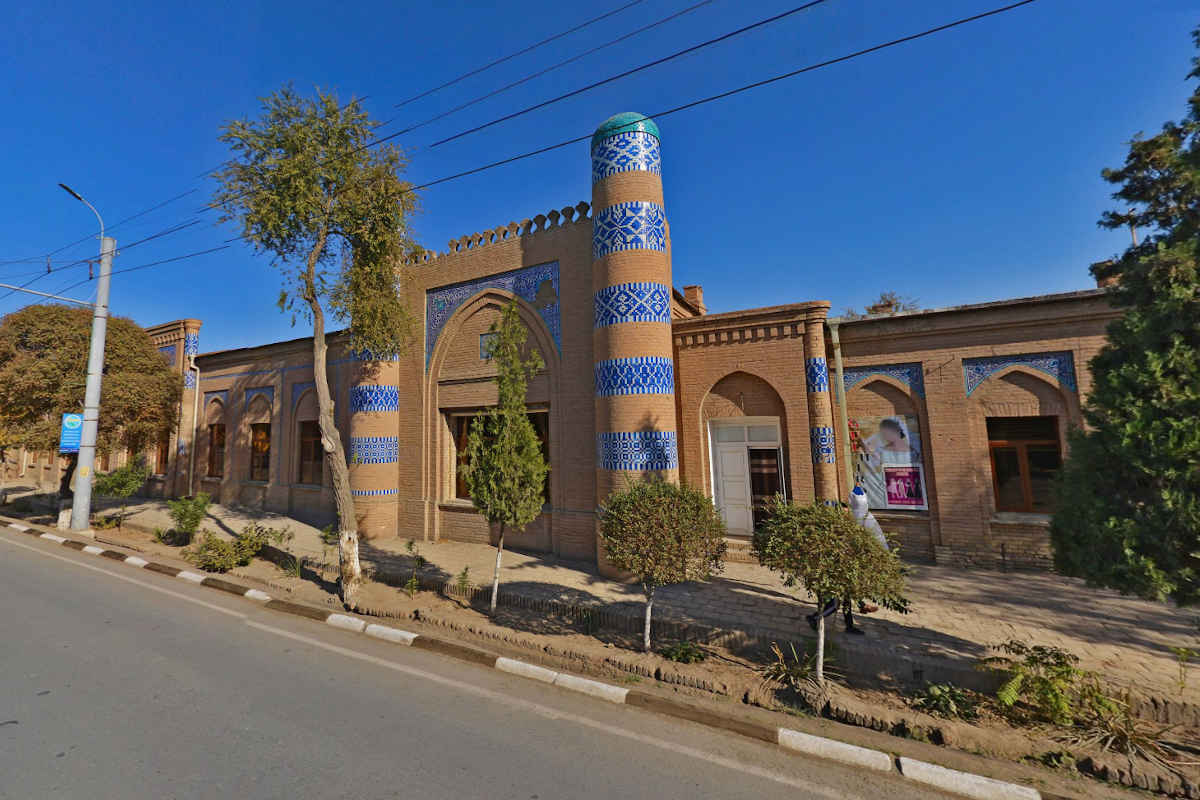Khiva - Dishan Kala hospital
The Hospital is located in the Dishan-Kala (Outer City) area of Khiva. Outside the walls of the central citadel (Ichan-Kala), a public hospital was established in the early twentieth century. Professional doctors took the place of the tabibs – healers – who were popular among the population. The hospital complex stretched for several hundred metres along the walls of the inner city fortress of Ichan-Kala. A well-known painter from Khiva named Abdulla Baltaev took part in the construction and final decoration of the hospital buildings.

It is noteworthy that the bright wall majolica preserved to this day with the inscription: “The hospital of Khiva, named after the son of Tsar Alexey” tells of the close relations of the ruler of Khiva with the ruling Russian Empire. All the buildings are built in the style of eclecticism, which combines elements of Western architecture and local traditional motifs. It is worth noting that the hospital is still in operation.
In the XIX century, Khiva Khanate did not have advanced building materials that would facilitate the mass construction of dwellings and other buildings. The reason for this was its geographical location, which was far from the industrially developed cities of Central Asia. At the beginning of the XX century, people who understood the need for transformations in all spheres of life and the importance of building relations with other states from which successful experiences could be adopted, appeared.
One such person was the Khan’s vizier, Islam Khodja. Thanks to his efforts, funds were allocated for the construction of buildings for medical, educational and other facilities. Thus, in 1912, the hospital, the only one in the entire Khanate, was opened. Gradually the staff of the institution expanded, it employed many experienced doctors from different cities of the Russian Empire. The hospital even had a women’s department, which looked after mothers and their children. Later, a building of the post and telegraph station was opened in front of the hospital.
To understand why the hospital was dedicated to the son of Tsar Alexey, the son of the Russian Emperor Nicholas II, it is necessary to go into the prehistory of the foundation of the Khanate of Khiva and its relations with the Russian Empire. Since ancient times, the trade routes of the East ran through the cities of Khorezm (modern-day Uzbekistan), unfortunately the same routes that the invaders used to get here. The warlike Mongols, who wanted to conquer the new lands, conquered and destroyed many cities in Central Asia.
In the course of time, there was a split among the conquerors that weakened the Golden Horde, it broke up into several parts that began an internal struggle for power. Amir Temur settled in Samarkand and made it the capital of his empire. Later, nomadic Uzbeks arrived in these areas. Successful conquests led to the founding of their own states. Among them, the Khanates of Khiva and Bukhara were particularly prominent. In the Middle Ages, the Great Silk Road passed through Khiva and traders made a stopover in the city. Thanks to this, the city became prosperous and gained prestige, which brought it to the attention of other states.
Peter I also turned his attention to Khiva and tried to persuade the Khan to accept Russian citizenship. However, the expedition of soldiers and diplomats was to suffer a sad fate: Most of the envoys were killed, the rest were sold into slavery. It was not until 1873 that it was possible to raise a large Russian army to take the city. No drastic measures were taken – the khan did not lose his power, but in return the conquerors received half of the khanate’s territory and recognised its protectorate.
It should be noted that the last condition did not greatly affect the khanate’s rights, as the Russian Empire exercised minimal participation in the khanate’s internal processes. Isfandiyar khan, who ruled at the beginning of the 20th century, was rather loyal to Nicholas II. Consequently, the hospital built in 1912 in the Dishan-Kala area of Khiva was named after the Tsar’s only heir.
